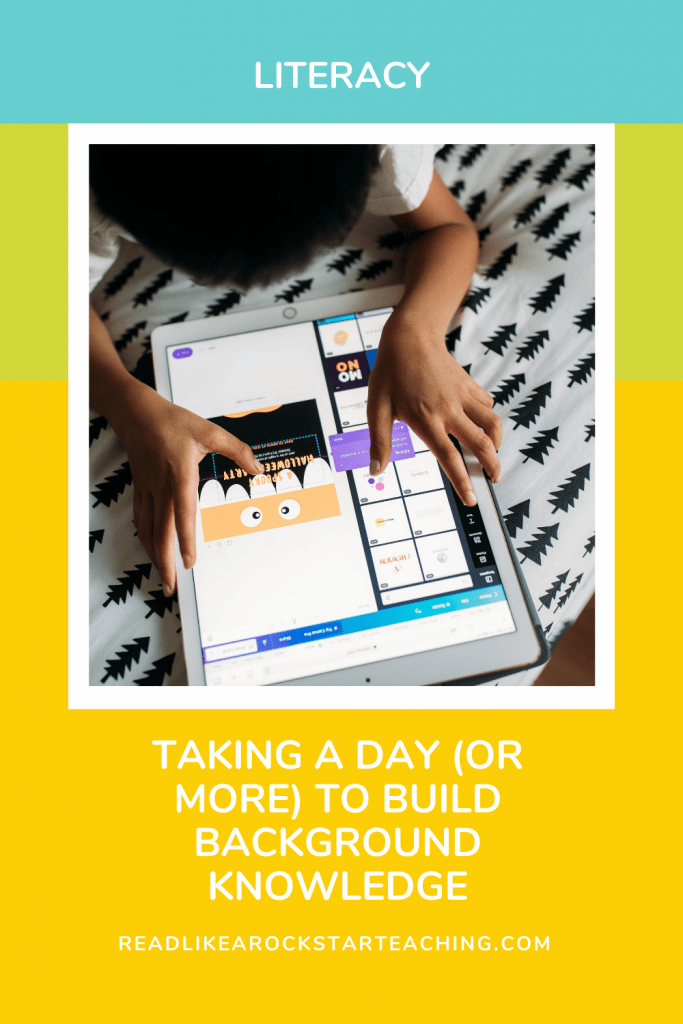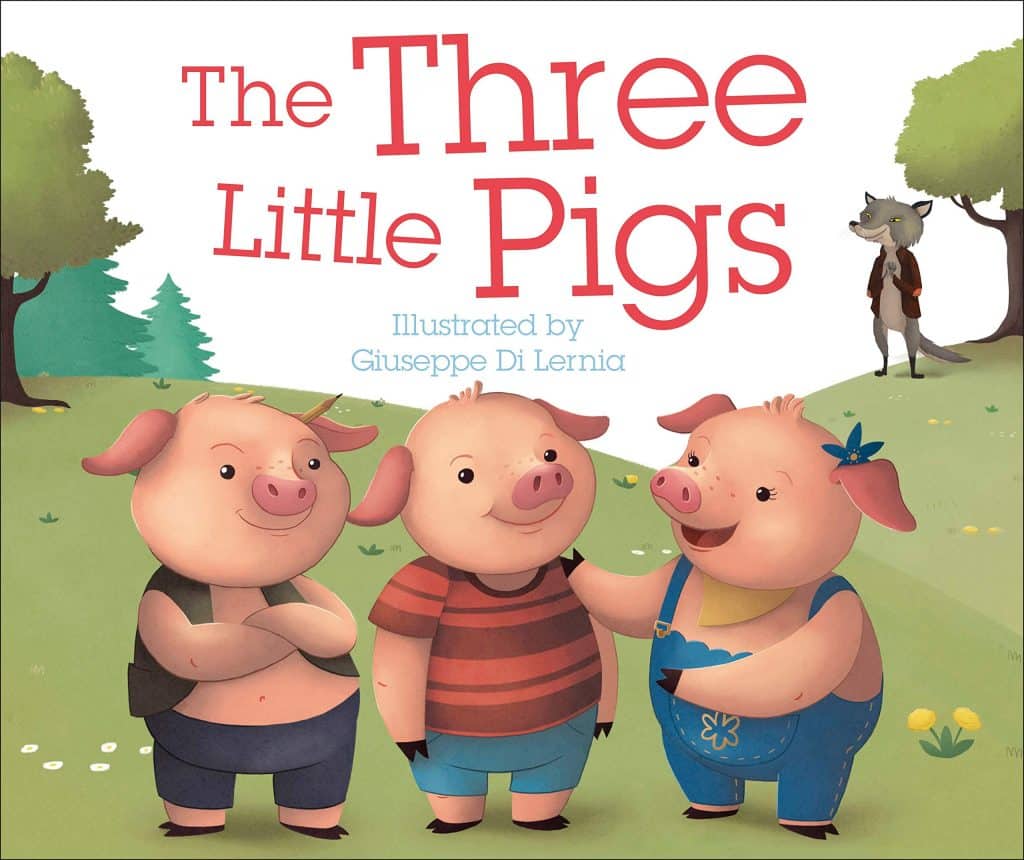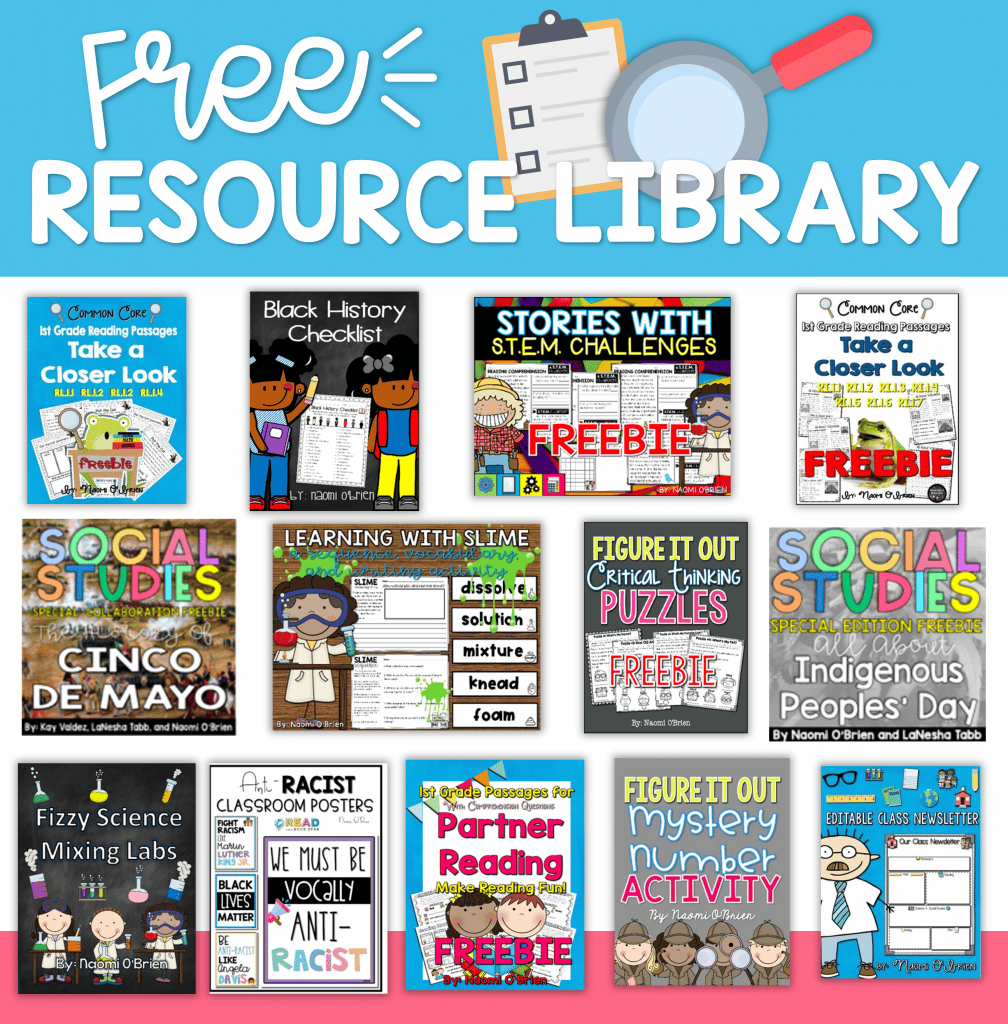

If I could step back in time and watch myself attempt to build background knowledge for my students before a read aloud, I would cringe so hard.
Now that I have learned the research behind why taking time to build background knowledge is so critical, I can never go back to my old way of teaching. I remember when my principal first suggested that we start taking a day or more (if needed) to build background knowledge- that sounded absurd to me! I couldn’t imagine “wasting” a precious day just building background knowledge, but once I saw how transformative it was for my learners, I became a believer.
Kids need background knowledge to better understand the world around them and it helps them access books as well!
So, let’s say I was reading the class The Three Little Pigs. I would just hold up the book, ask my students to make predictions based on the title and cover and ask if anyone knows anything about pigs. That would take all of 42 seconds and then I would jump into the book because standards and comprehension questions were much more important for me to fit in at that time.

Note: I wouldn’t actually read this text for a read aloud, because I am a firm believer that the texts we choose for read alouds should be a grade level or 2 above our students reading level (one they couldn’t comprehend without our guidance). But let’s pretend this book was super complex for my first graders.
Can you think about the opportunity I missed to build background knowledge on a deeper level with my students? Before I read any text to my students, I think about the key understanding I would want students to walk away with. After a lesson about the Three Little Pigs, I would want my students to understand that it’s important to take our time and do things right. In order to get to this key understanding, there’s some background knowledge they need. My students would need to know the difference in building materials and how some materials are stronger than others.
We can’t assume that students just know this stuff. If students are unaware that bricks are stronger than sticks or straw, then the key understanding of the book might go right over their heads. Yes, we can simply tell them the point of the story, but that takes away the learning from them. If we equip them with background knowledge they can infer, think critically, and make informed choices.
Now imagine: Before you ever read the book, you can tell your students that you have to build background knowledge to help them better understand the text they’ll be reading the following day.
Then you would have a lesson about the different materials used to construct houses. You won’t only include the straw, sticks, and bricks, but a variety of building materials and discuss the pros and cons of each one.
You might even allow students to engage in an activity where they are tasked with building strong houses that can withstand a fan or a classmate blowing on it.
How much more prepared will students be to take in and comprehend the key understanding if background knowledge is a priority and not something we quickly throw in?
This study conducted by Donna Recht and Lauren Leslie illustrates the power of background knowledge so well. They sought to gather information about whether reading ability and/or background knowledge made a huge difference when it came to comprehending texts. Spoiler Alert: It did!
They gave students a passage about baseball and asked them questions about it. Students were a mix of kids who were strong readers that had background knowledge about baseball, strong readers without the background knowledge, low ability readers with baseball background knowledge, and low ability readers without background knowledge.

“To their surprise, Recht and Leslie found that reading ability had little impact on how well kids understood the story. But knowledge of baseball did. In fact, those who were weaker readers did as well as strong readers if they had knowledge of baseball.”
Once I made this shift in my classroom (to prioritize background knowledge), I really saw my students’ comprehension take off. They had a better understanding of the stories we read because they were able to come prepared to comprehend with background knowledge. They could make predictions, infer, and understand character motives in a story better because of the background knowledge they were equipped with.
I’ll show you some of the background knowledge eBooks my co-creator and I created and the books we paired them with. We chose the books, pulled a key understanding and then thought about the background knowledge our students would need to access it. Sometimes that meant spending more than one day on background knowledge, but it was worth it!











For some of our texts we even added in other elements in addition to the eBooks we created to build knowledge with our students. We incorporated YouTube, games, and hands-on activities to help students understand and build new knowledge.
When I taught read The Spider and the Fly with my students, we played a game (basically tag) but we were spiders and flies. We paired this with an eBook I created and a YouTube video to make sure students understand the predator/prey relationship between spiders and flies.
LaNesha (my co-creator) and I have put together many reading lessons for K/1 students (as seen above) and the background knowledge eBooks are included. Check them out here.
We even created a line of resources called Background Builders to help students pick up knowledge around similar themes. They cover all of the nonfiction standards and help students learn about interesting and real topics and people.




| Cookie | Duration | Description |
|---|---|---|
| cookielawinfo-checkbox-analytics | 11 months | This cookie is set by GDPR Cookie Consent plugin. The cookie is used to store the user consent for the cookies in the category "Analytics". |
| cookielawinfo-checkbox-functional | 11 months | The cookie is set by GDPR cookie consent to record the user consent for the cookies in the category "Functional". |
| cookielawinfo-checkbox-necessary | 11 months | This cookie is set by GDPR Cookie Consent plugin. The cookies is used to store the user consent for the cookies in the category "Necessary". |
| cookielawinfo-checkbox-others | 11 months | This cookie is set by GDPR Cookie Consent plugin. The cookie is used to store the user consent for the cookies in the category "Other. |
| cookielawinfo-checkbox-performance | 11 months | This cookie is set by GDPR Cookie Consent plugin. The cookie is used to store the user consent for the cookies in the category "Performance". |
| viewed_cookie_policy | 11 months | The cookie is set by the GDPR Cookie Consent plugin and is used to store whether or not user has consented to the use of cookies. It does not store any personal data. |
Thank you for your interest in booking a private professional development experience! Please fill out our Booking Inquiry form and a member of our team will contact you soon.